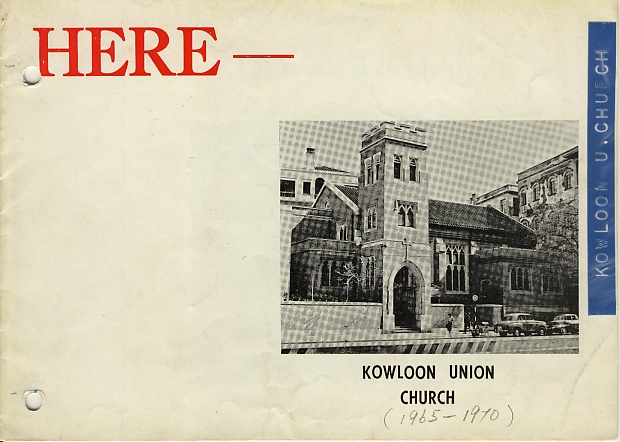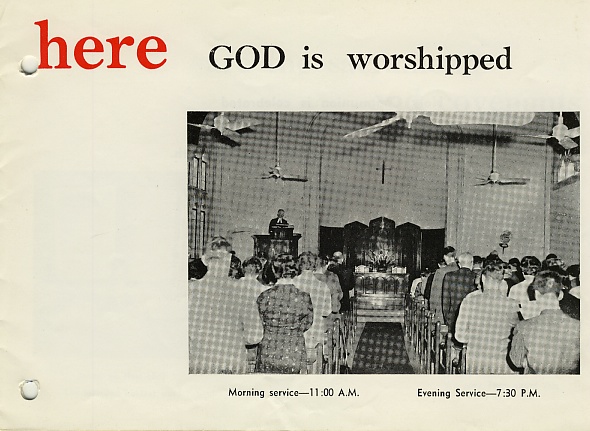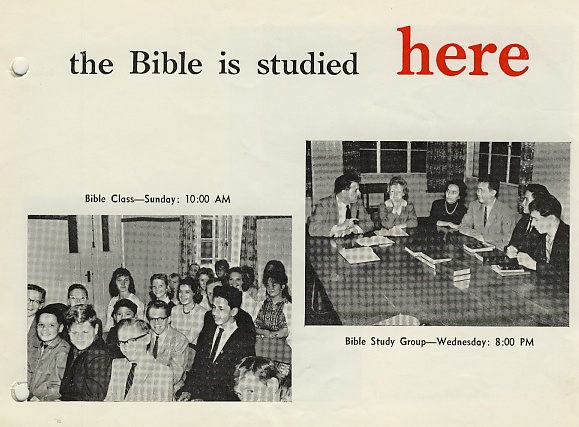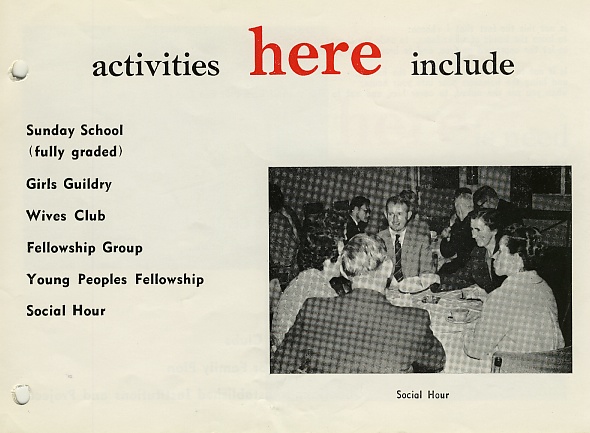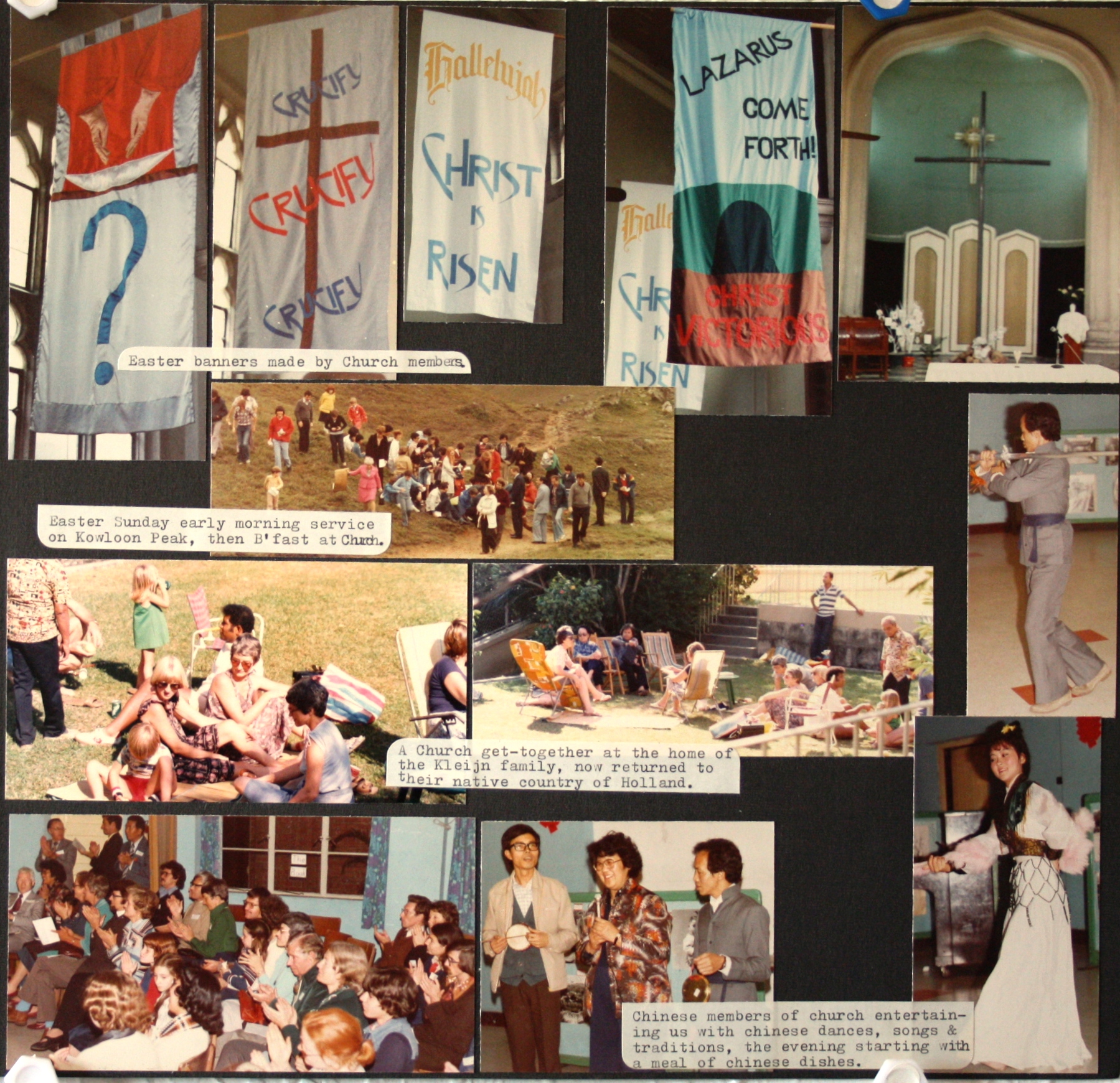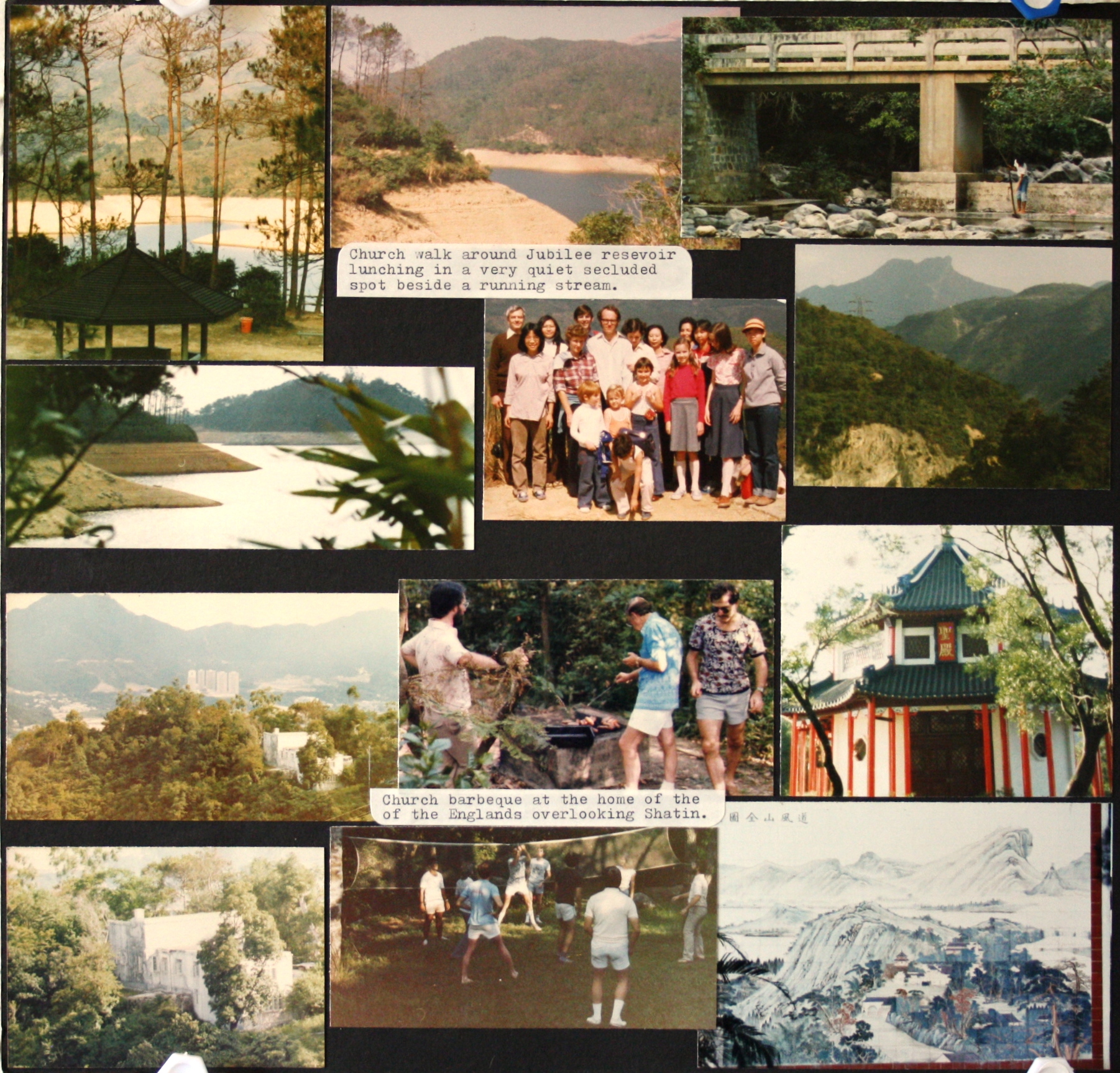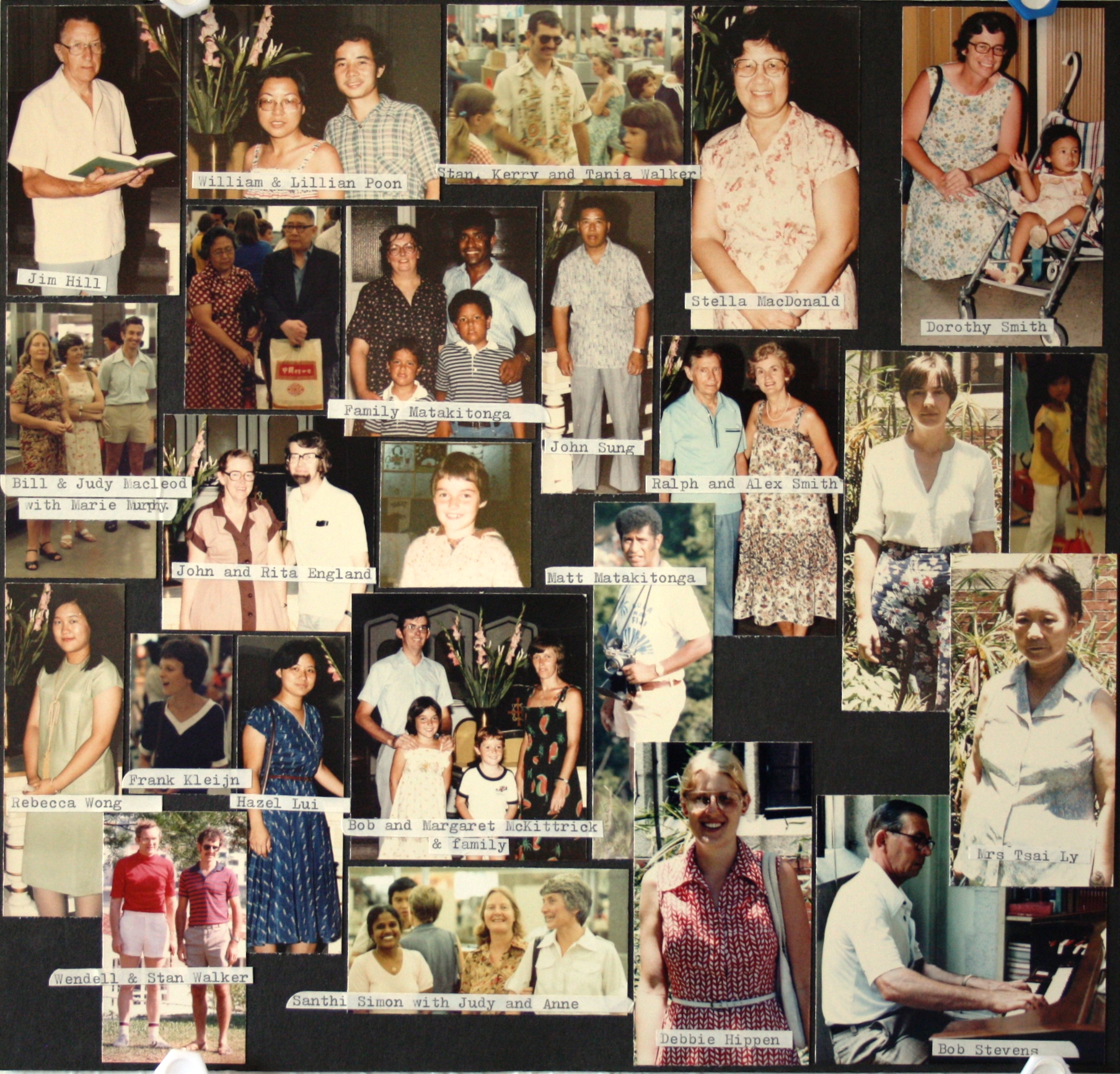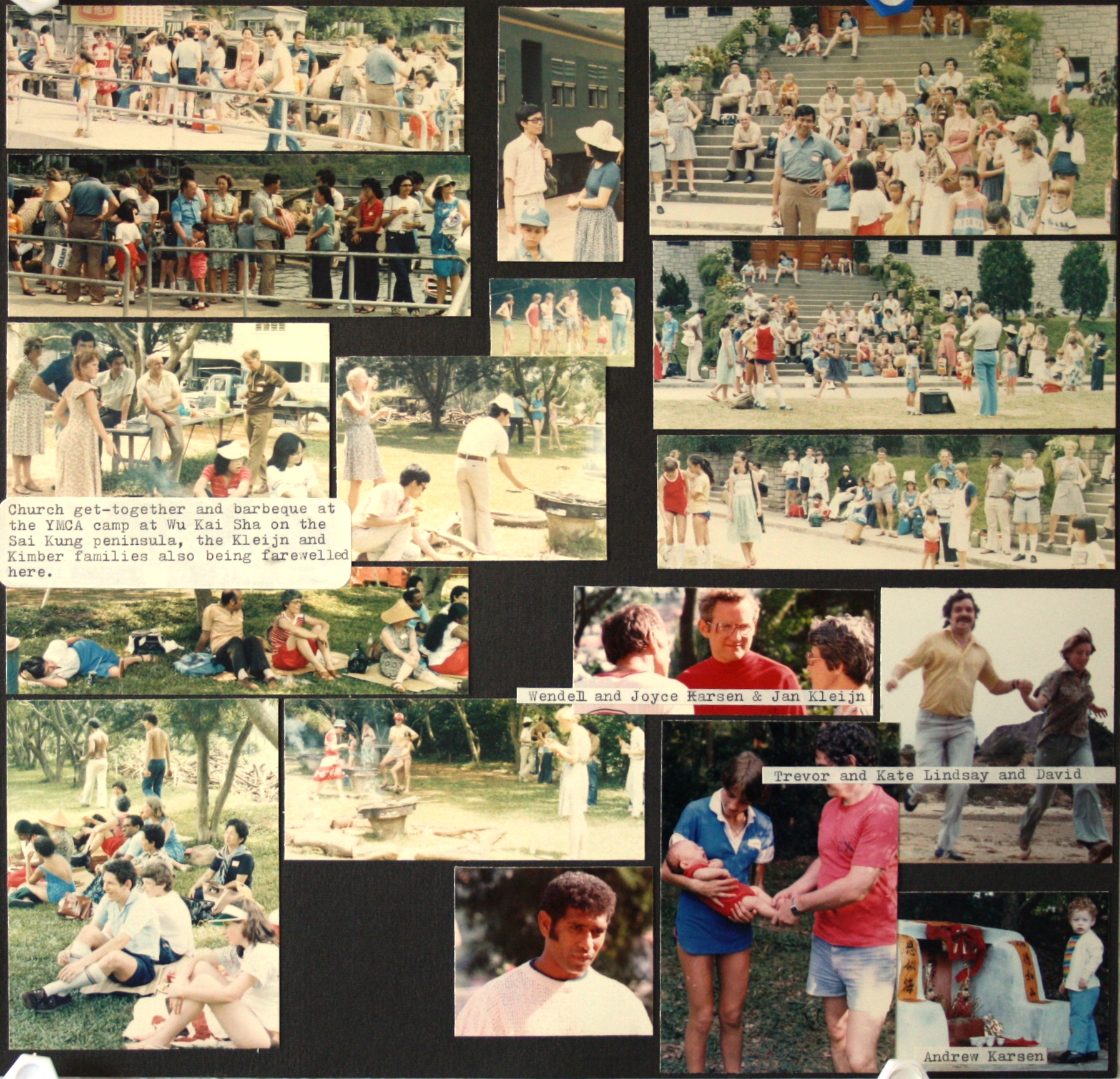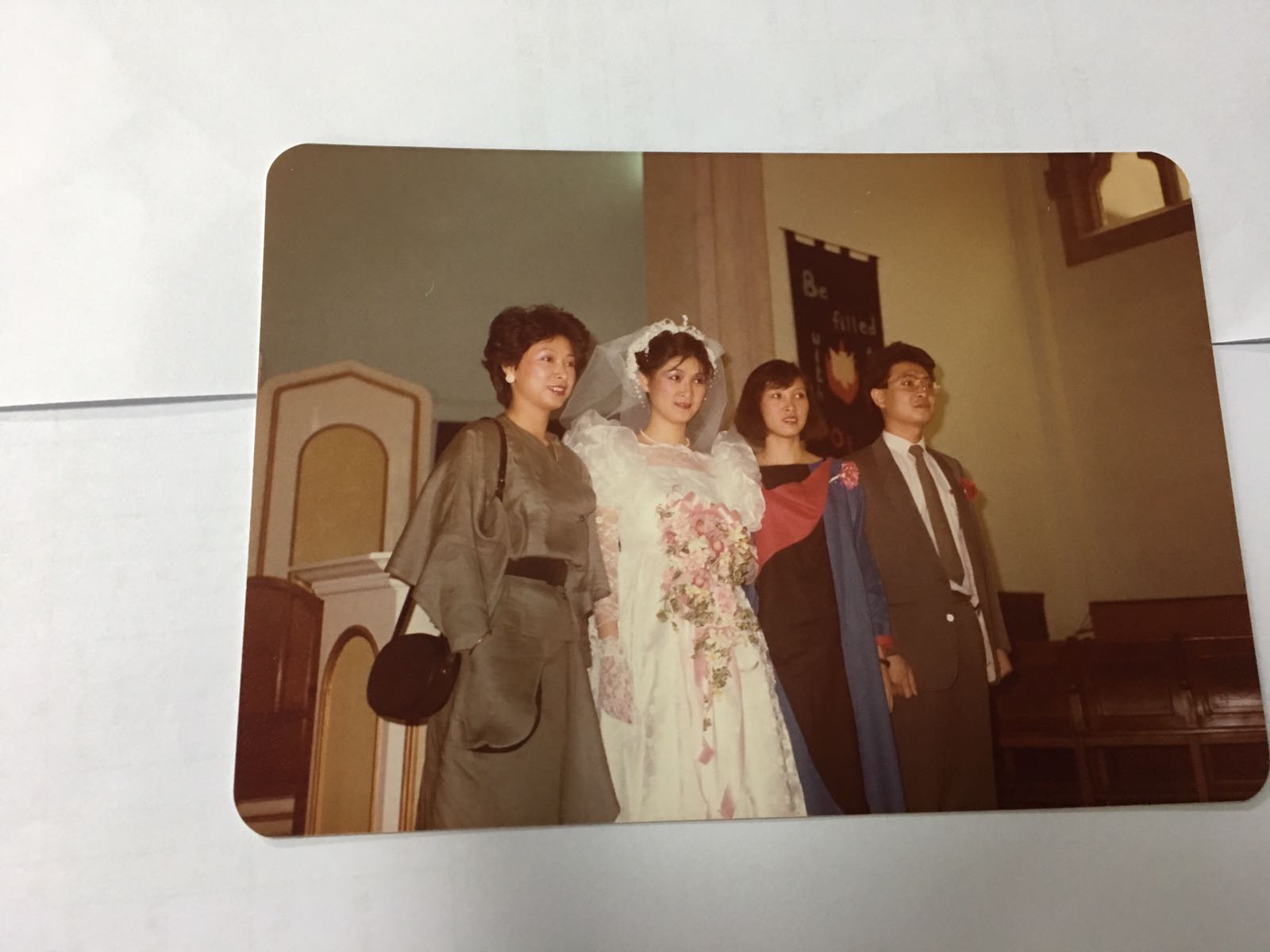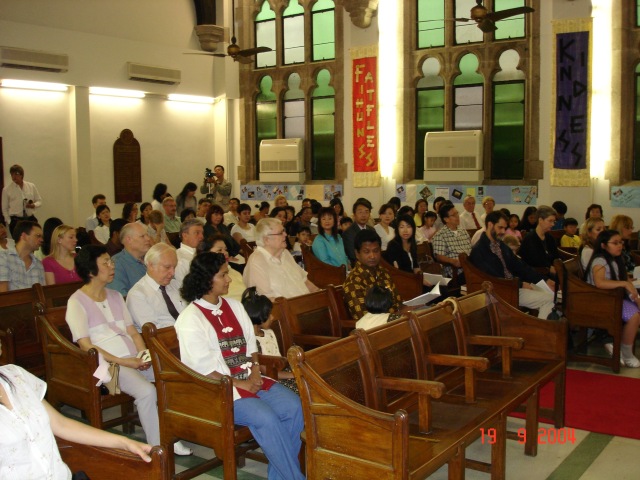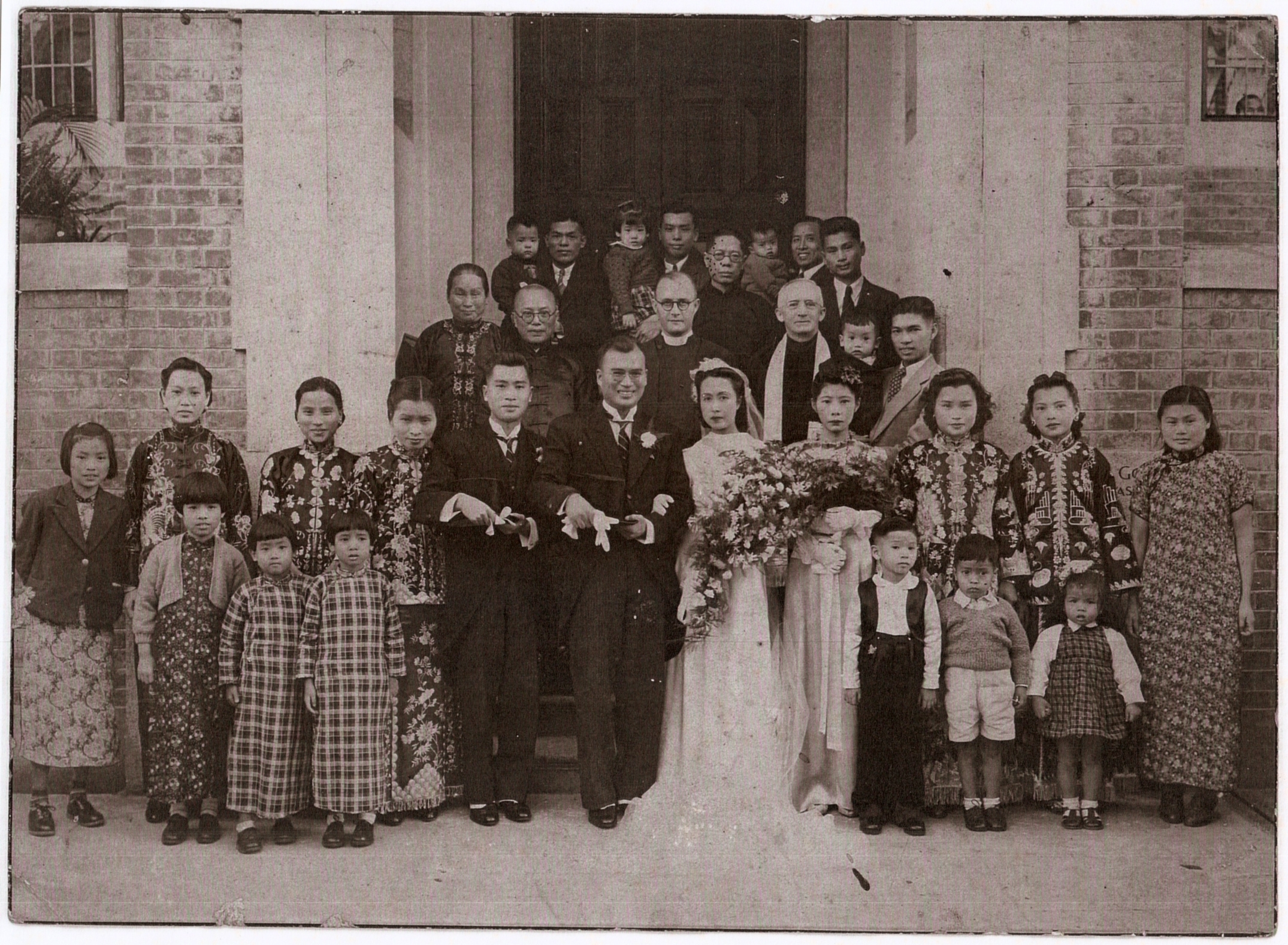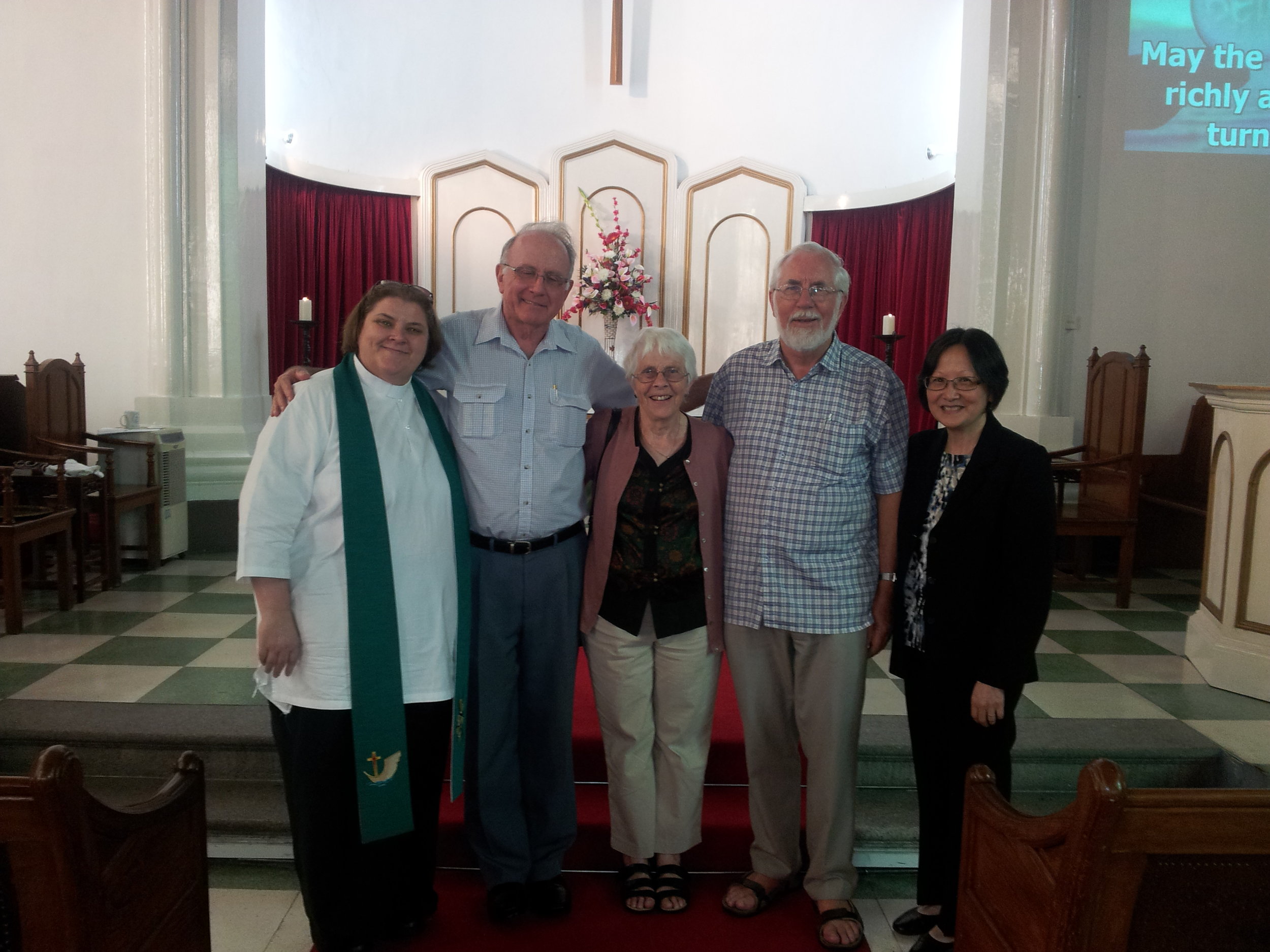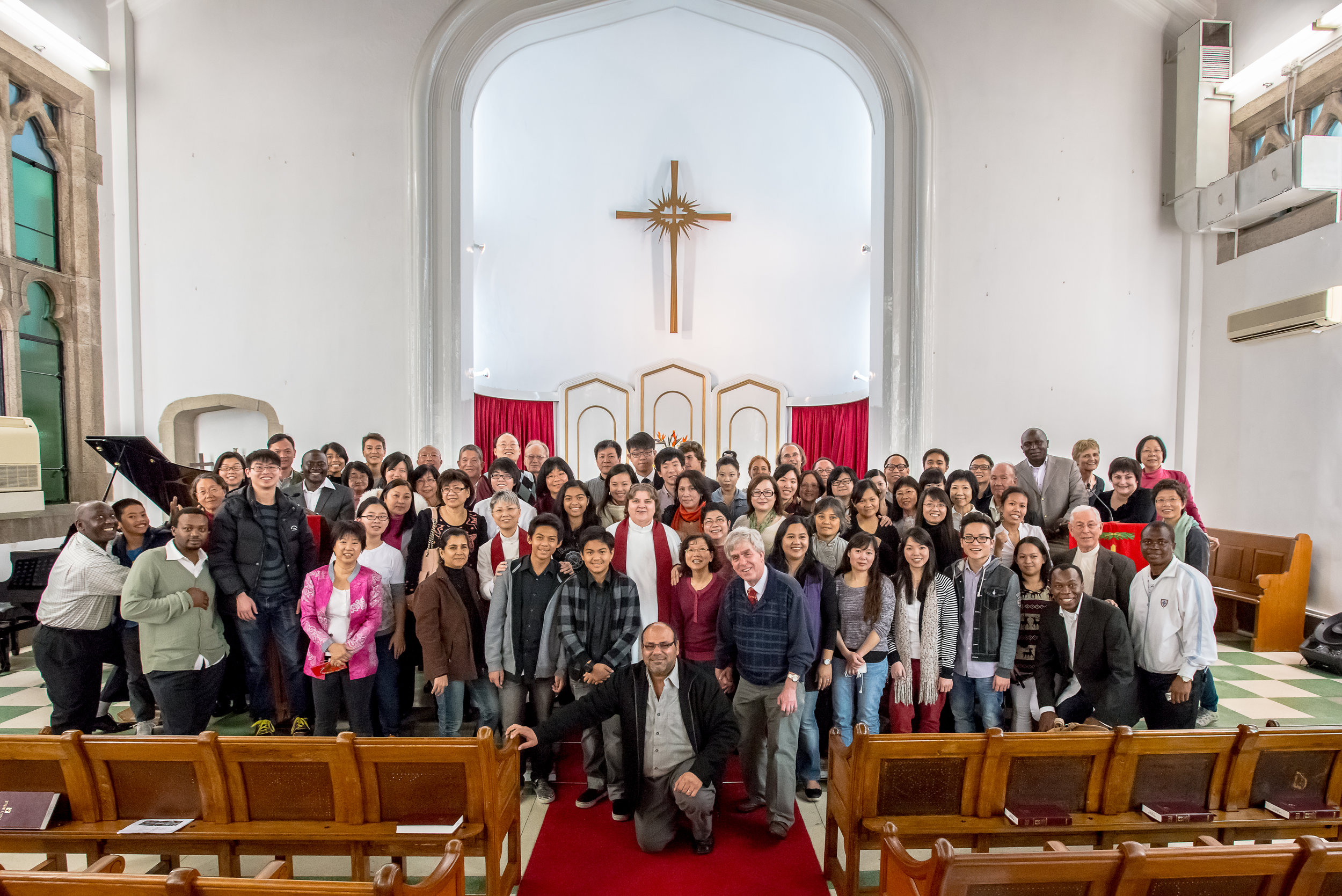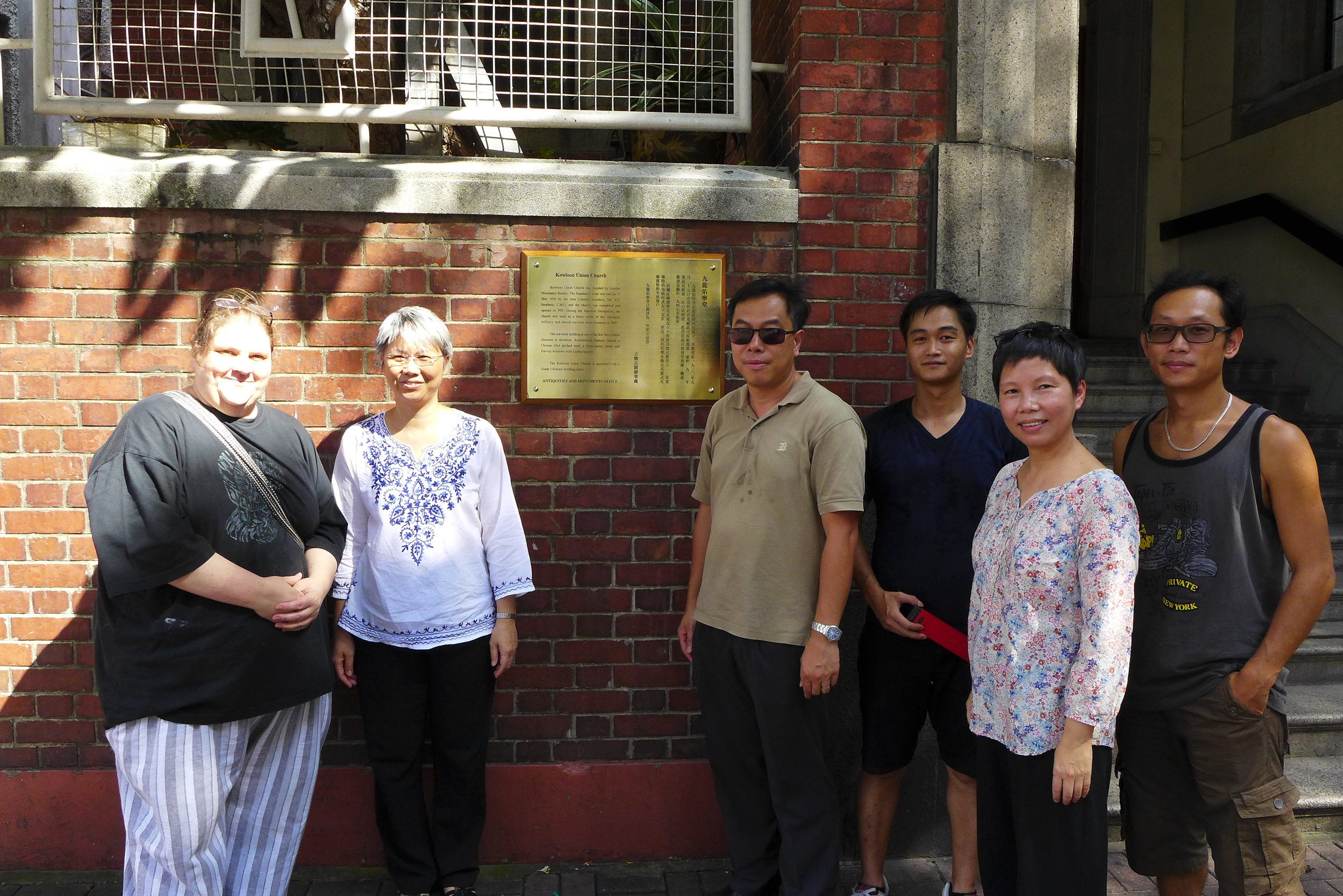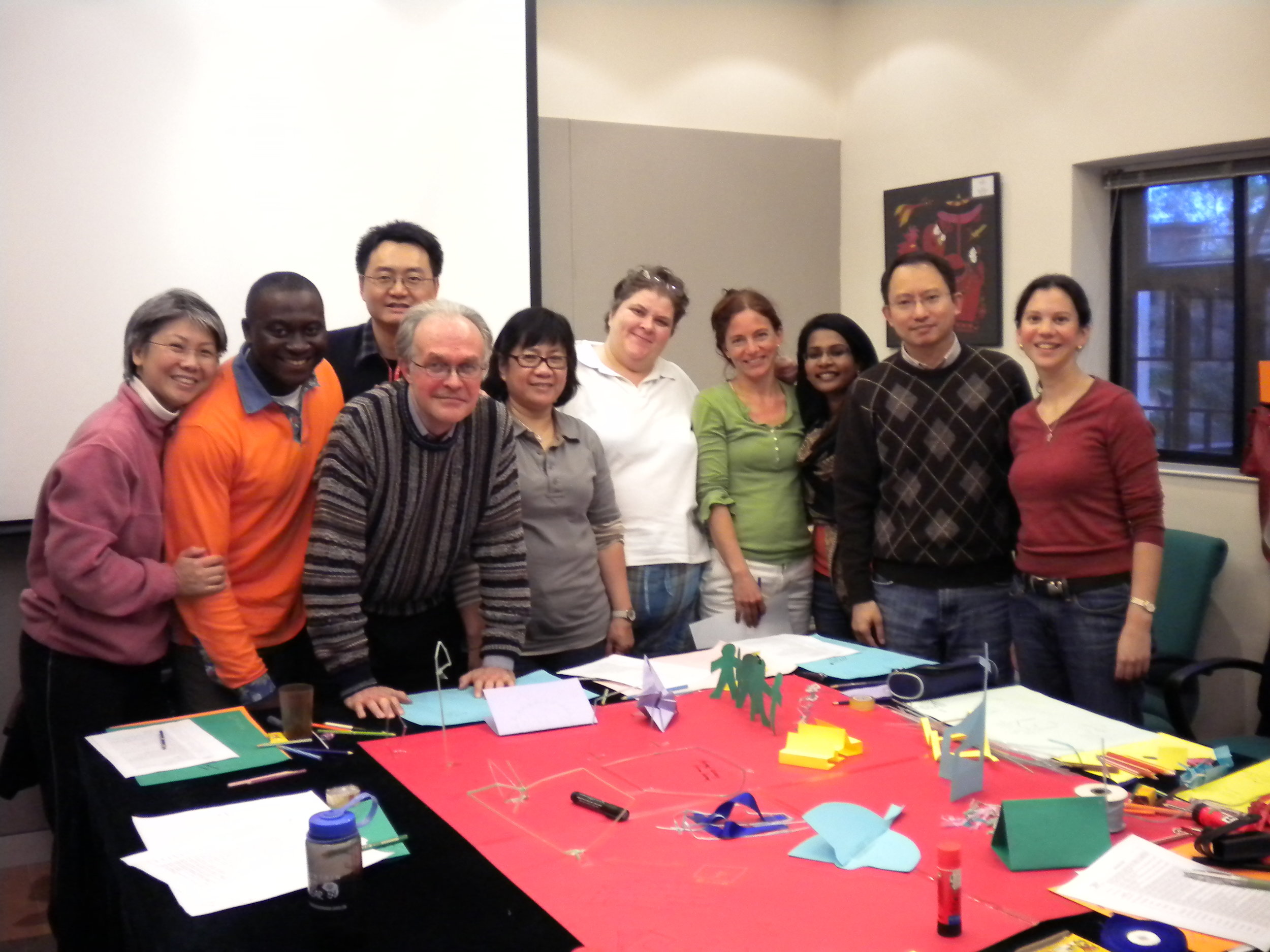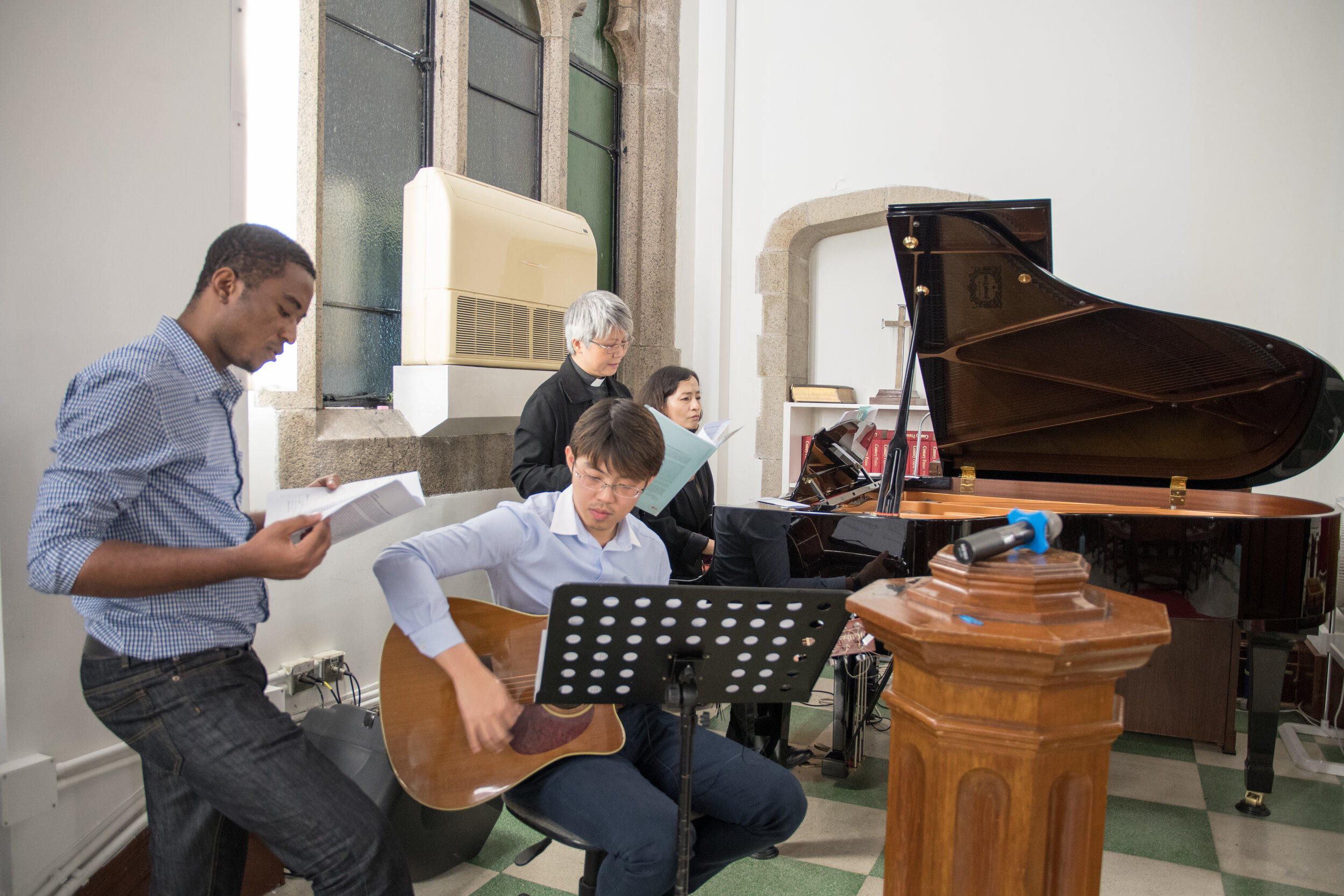History of KUC
The Island of Hong Kong was ceded to Britain on the 29th of August 1842. A year later, the Rev, James Legge of the London Missionary Society arrived in the Colony and began to hold meetings in his own house for the English-speaking community. In 1844 a Chapel was built where "the Ordinances of Christianity would be administered without distinction of Denominations". Union Chapel was therefore opened in 1845, the London Missionary Society having contributed more than half the cost. Dr. Legge continued to minister to the congregation during the next twenty years, but by the year 1849, the Anglican members of Union Chapel had seceded, and St. John’s Cathedral (Nave and Tower) was opened.
The Congregation of Union Chapel removed to a new building in Staunton Street in 1865, where, under the name of "Union Church" and with a new Trust Deed, it entered upon a more independent existence, although the London Missionary Society was still regarded as its sponsor and guarantor. The years that followed were fraught with many vicissitudes. Dr. Legge left the Colony in 1867, but returned later to finish his edition of the Chinese Classics. Those were prosperous years, but the church would have had to be abandoned in 1885 had not Dr. Eitel, another famous scholar, given his services to it gratuitously.
In 1887, the Church and building were removed to Kennedy Road. And in 1911, during the ministry of the Rev. C.H. Hickling, an Ordinance of incorporation was passed. Under the long and successful ministry of the Rev. J. Kirk Maconachie, and during the years of the financial boom which followed the Great War, Union Church, Hong Kong rose to a very high level of financial and congregational prosperity.
Kowloon, although ceded to Britain as early as 1860, did not attract many residents until the beginning of the century. In 1902, religious services were commenced in the Kowloon British School by the Rev. C.H. Hickling. They were soon discontinued however, owing to the difficulty of finding a suitable hour for worship. A branch Sunday school continued to exist until 1905, when the Church of England, enabled by the generosity of Sir Paul Chater, erected a Church in Kowloon. The services there were of a simple evangelical nature and members of all denominations were made welcome. The Church was even dedicated to the Patron Saint of Scotland, St. Andrew. Thus the need for a Union Church in Kowloon did not become acute until about 20 years after the Rev. C.H. Hickling’s experiment, when a fresh effort was initiated by the Rev, J. Kirk Maconachie. Sir Paul Chater offered to defray the cost of the building if the Government would offer a site.
A Petition, signed by some two hundred Kowloon residents, was presented to the Government in 1922, appealing for the grant of a site upon which to erect a Church building for a Congregation similar in principle to the Union Church in Hong Kong. The Rev. J. Horace Johnston accepted the task of forming a congregation in Kowloon and arrived in the Colony in 1923. The first congregation met in the Central British School on the first Sunday in January 1924. The first Church building, (the existing Church Hall) was opened for public worship nine months later, on the 19th of September of the same year.
Kowloon Union Church was founded in 1927 with the following fundamental aim:
to provide that fellowship in public worship and in spiritual communion and service which is the privilege and practice of all Christians;
to spread the knowledge of the love of God in Jesus Christ, and
to unite in fellowship and the worship of God, Christians of differing traditions and Nationalities.
The theological position of the Church was Protestant, and its ordained Minister or Ministers were to be chosen from the ministry of a mainline Protestant Church, but otherwise membership of the Church was open to those who confess a Faith in Jesus Christ as their Saviour and Lord.
The Government promised to reserve a large site beyond the Kowloon Hospital in Ma Tau Wei for a permanent Church, but this site was surrendered in exchange for the strip of land upon which our Church, Hall and Manse now stand. The foundation-stone of Kowloon Union Church, was laid on the 27th of May 1930 by the then colonial secretary Sir. W.T. Southorn, and our Church building and Manse were completed and opened on the 10th of April, 1931.
During the period from December 1941 to October 16th, 1947 the Church ceased to function on account of the capture of Hong Kong in World War II.
When Hong Kong was occupied by the Japanese, the Church property was left unprotected and suffered severe looting and damage. All Church and manse furniture and fixtures, and the roof of the school hall disappeared. The church hall was an empty shell used for the stabling of Japanese horses.
When residents began to return to the Colony, efforts were made under the leadership of Mr. A.W. Ingram to reconstitute the Committee of Management and the Trustees. Repairs were undertaken and furniture purchased. This included two of the old pews, found in a second hand shop. The Church was again opened for public worship with a rededication service held on October 19th, 1947.
The main problem facing the Church in 1947 was how to obtain a permanent minister. For a few years, missionaries, visiting preachers, and services, chaplains made a wonderful contribution, and the Church was indeed blessed by their ministry. In August 1949, The Rev. A.E. Small of the London Missionary Society arrived in the Colony hoping that he might be able to get back into China. While waiting, he was invited to serve as acting Pastor, and his first service was held on the last Sunday of August, 1949.
Increasing numbers of servicemen were now coming to the Colony, and in order to serve their needs as well as those of Church members, evening services were restarted. The Service was followed by an hour of fellowship- "the social hour". For many years this continued but as the services’ population dwindled, this project was finally abandoned. The ladies of the Church had faithfully and freely provided food and refreshments each Sunday evening.
In 1950, Mr. Small heard to his dismay that permission to enter Shanghai had been refused. The Congregation thus warmly invited him to become their permanent minister. In agreement with the London Missionary Society, Mr. Small accepted the post for a short period initially. Improvements continued to be made and gradually the Church was put in a good state of repair.
The years that followed were ones of continued progress and Mr. Small continued to serve as Minister. In 1955, new halls for the Sunday school were opened by Mrs. Barbara Whitener. These consisted of a two storey building with a small hall on the ground floor, and a small hall with classrooms above.
Facilities had been granted to other religious organizations who wished to use the Church and its amenities. For several years there was a happy relationship with the Hop Yat Cantonese Church and the Mandarin speaking Lutheran Church.
The Church was favoured with the continued services of Rev. A.E. Small until May 1961 when he left to take up a new appointment in Bechuanaland. Again there was a long interim period until April 1962, when the Rev. Norman Kemp took up the ministry, and remained until 1966. During the interim, many friends of the Church gave freely of their services, including the Rev. E.E. Gates, the Rev. Tom Settle and the Rev. Walton Tonge.
In 1967, it was the good fortune of the Church to obtain the ministration of the Rev. James Muir who came to us ‘not as a stranger’. 1967 was a difficult year, for both expatriates and local Chinese felt uneasy during riots among the Chinese population. Gradually more and more English speaking Cantonese young people came to our church for spiritual nourishment, and as a result the Cantonese Bible Class was started.
Although language is not mentioned in the Constitution, the Church had always been English-speaking and predominantly "western", the majority of members coming from Europe, America, Britain and Canada with smaller numbers from Australia and New Zealand. The late 60’s were to see the numbers of local Chinese and other Asian members grow from a handful to a substantial proportion of the total congregation.
Mr. Muir resigned early in 1973, but continued faithfully as our minister until summer. Rev. E.E. Gates, having retired from his congregation in the United States, returned with Mrs. Gates to Hong Kong and ministered to our congregation for a three year term. When Dr. and Mrs. Gates left in 1976, the Rev. W.M. McLeod from the Presbyterian Church of Australia was invited to become our Pastor. The McLeod family came to us in the winter of 1976.
The differing ethnic, national and church backgrounds of members make for considerable variation and enrichment in attitude toward the forms of worship and the christian education programme of the church. Sunday school classes, youth groups, adult bible study groups have all continued in various forms according to the membership needs of each period.
Our outreach programme has also been varied. During the sixties the church ran a playgroup for under-privileged children in the neighbourhood, and assisted some with scholarships for later schooling. There was also a social welfare programme to selected families referred to the church by professional agencies. In the mid-sixties, the church hall was made available for use, by high school students as a quiet place for study. In the seventies this study facility continued, and in 1975 both a kindergarten and a playgroup were opened to meet the great need for such facilities in the community, especially among the non-Chinese Asians. Throughout these years the premises have been made available to a variety of Christian groups to hold meetings for evangelism, study, worship or counseling - some on a regular basis for many years. Also, direct financial aid has been given to selected charities.
In 1975, one of our church members, Pastor Le Thanh Nhon was caught here at the time of the fall of his home city of Saigon. Sponsored by the YMCA, Pastor Nhon was able to minister to many Vietnamese refugees arriving in the colony, and eventually in 1977 to welcome his wife and family. Pastor Nhon continued to meet with the Vietnamese in our sanctuary, and received about 35 refugees into baptism and the Christian fellowship of our church. Later he was able to emigrate with his family to the United States.
Through the years some members of the congregation had felt a pressing need for our church to become involved in the education of the mentally retarded. Thus in 1978 negotiations were undertaken, and with the promise of an annual subsidy from the Government, the Wai Ji School was opened on March 19th, 1979. This work among the severely mentally handicapped has grown from an initial 6 trainees to a maximum of 50 trainees with 12 full time staff. The training Centre up till now has used our Church halls in the afternoon. However negotiations with the Government began in early 1981 for a purpose-built center providing a whole day programme. The new Centre in the Nam Shan estate of Shek Kip Mei is expected to be officially opened in March 1984.
In September 1980, Bill MacLeod and his family returned to Australia at the end of their 4-year contract. For the nine month period of October 80, to May 81, we enjoyed the ministry of Rev. and Mrs. Brad Abernethy, who came on a short term basis. In March 1981 a call was extended to Rev. Clabon Allen who was serving in Hong Kong with the Church of Christ in China. He and his family had been quite active in the church in the preceding years. After helping informally for a few months, Mr. Allen began his ministry in September 1981.
Since its founding as a worshipping congregation on the first Sunday of January 1924, this church has faced many challenges and experienced the guidance and grace of our loving God. The coming years will bring more challenges. In May 1982 the church agreed in principle to investigate the possibility of a redevelopment of our church site. Discussion and negotiations with Government are still going on and we do not know what the outcome will be.
We believe that our members will continue to play their part within the Body of Christ, the church. As we look back over 60 years, "we are convinced that God has a calling for us" to glorify God's name and serve God's people in the coming years.
[The above article was written for the 60th anniversary of Kowloon Union Church, 1984]





